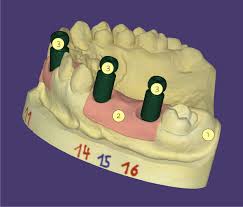Description
Introduction of Abutment Design with Exocad
Custom Abutment Design with Exocad is a specialized course designed for dental professionals and technicians who wish to expand their expertise in creating custom abutments using Exocad’s advanced design tools. This course covers the complete process of designing abutments, from selecting the right materials and configuring the virtual model to finalizing the design for manufacturing. Participants will learn to leverage Exocad’s features to create patient-specific, anatomically accurate custom abutments that integrate seamlessly with implants and ensure optimal fit and function.
Prerequisites of Abutment Design with Exocad
This course is intended for individuals who:
- Have basic knowledge of Exocad and its design tools.
- Are familiar with dental implantology and the components involved in implant restorations.
- Have experience with CAD/CAM systems and digital dentistry workflows.
- Understand the anatomy of the mouth and the principles of implant placement.
- Have access to Exocad software for hands-on practice.
Table of Contents
- Introduction to Custom Abutment Design
1.1 What is a Custom Abutment and Why It’s Important
1.2 The Role of Custom Abutments in Implantology
1.3 Overview of Exocad’s Custom Abutment Design Features(Ref: Exocad Integration with 3D Scanners)
1.4 The Benefits of Custom Abutments Over Stock Abutments - Getting Started with Abutment Design in Exocad
2.1 Overview of the Exocad Interface for Abutment Design
2.2 Selecting the Appropriate Implant System and Abutment Type
2.3 Importing Patient Data and Scanned Models
2.4 Initial Setup: Choosing Material and Implant Parameters - Creating the Custom Abutment
3.1 Designing the Abutment Base and Emergence Profile
3.2 Adjusting the Abutment Height and Contour for Ideal Fit
3.3 Customizing the Interface between the Implant and Abutment
3.4 Using Exocad’s Tools to Refine the Abutment Design - Optimizing the Abutment Design for Function and Aesthetics
4.1 Ensuring Proper Fit and Stability with Implant Connections
4.2 Adjusting for Occlusion and Contact Points
4.3 Achieving Optimal Aesthetic Outcomes for Visible Areas
4.4 The Role of Gingival Contour in Custom Abutment Design - Material Selection and Customization
5.1 Choosing Materials for Custom Abutments (Titanium, Zirconia, etc.)
5.2 Material-Specific Design Considerations
5.3 Strength, Aesthetics, and Biocompatibility in Material Selection
5.4 How Material Choice Affects the Abutment Design - Simulation and Analysis Tools in Exocad
6.1 Using Simulation Tools for Accurate Design Evaluation
6.2 Analyzing the Fit and Function of the Custom Abutment
6.3 Performing Stress Testing and Virtual Articulation
6.4 Troubleshooting Design Errors Using Exocad’s Analysis Tools - Exporting the Custom Abutment for Manufacturing
7.1 Exporting the Custom Abutment Design for CAM Systems
7.2 Preparing Files for 3D Printing or Milling
7.3 Checking for Design and File Compatibility with Manufacturing Equipment
7.4 Best Practices for Exporting to Ensure Quality Manufacturing - Advanced Techniques for Complex Custom Abutments
8.1 Designing Custom Abutments for Full-Arch Restorations
8.2 Managing Multiple Implants and Abutments in Complex Cases
8.3 Using Exocad’s Advanced Tools for Customized Cases
8.4 Incorporating Digital Impression Data for Improved Accuracy - Troubleshooting and Optimizing the Custom Abutment Design
9.1 Common Design Issues and How to Fix Them
9.2 Dealing with Implant Positioning Problems
9.3 Improving the Fit and Aesthetics of the Abutment
9.4 Optimizing Workflow for Efficient Abutment Design - Conclusion and Next Steps
10.1 Key Takeaways from the Custom Abutment Design Course
10.2 Applying Custom Abutment Design Knowledge in Clinical Practice
10.3 Further Resources for Advanced Implant Design and Techniques
Conclusion
By completing this course, participants will gain comprehensive expertise in designing custom abutments with Exocad. They will be equipped with the skills needed to create high-quality, anatomically precise custom abutments that enhance the fit, function, and aesthetics of implant restorations. Understanding material selection, design techniques, and advanced simulation tools will enable dental professionals to offer personalized, patient-specific solutions for implant procedures, improving both clinical outcomes and patient satisfaction.







Reviews
There are no reviews yet.